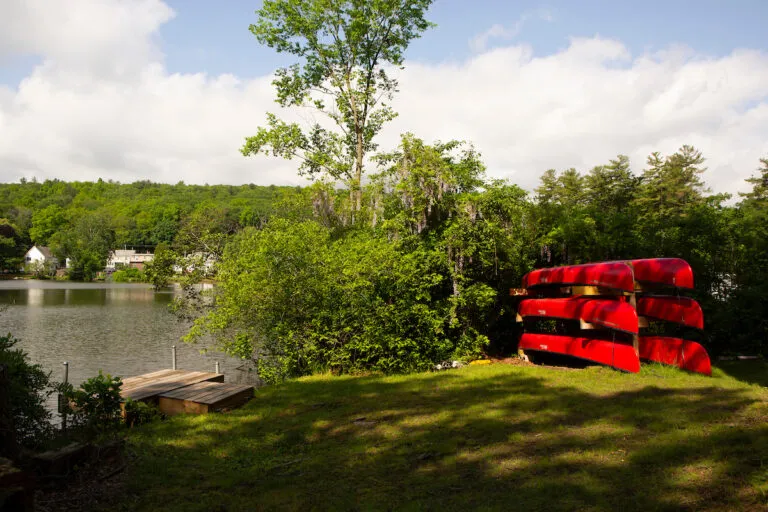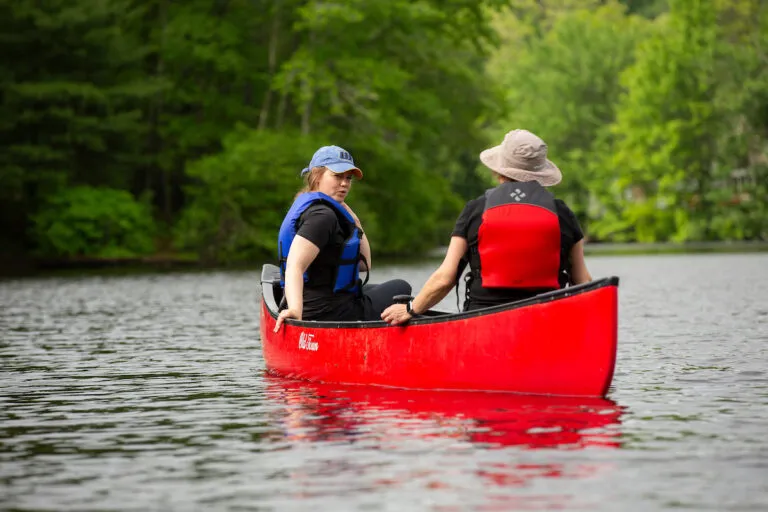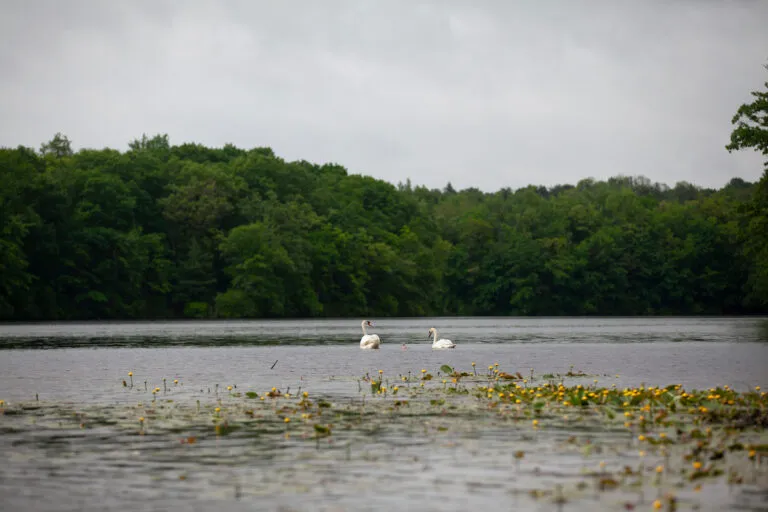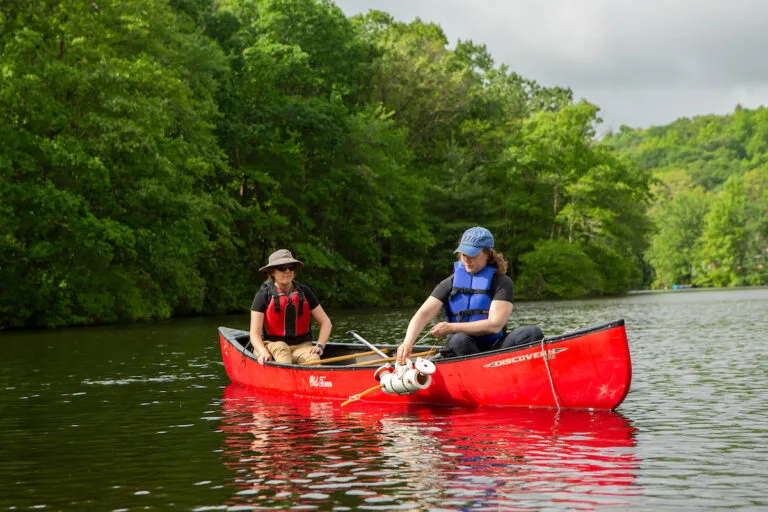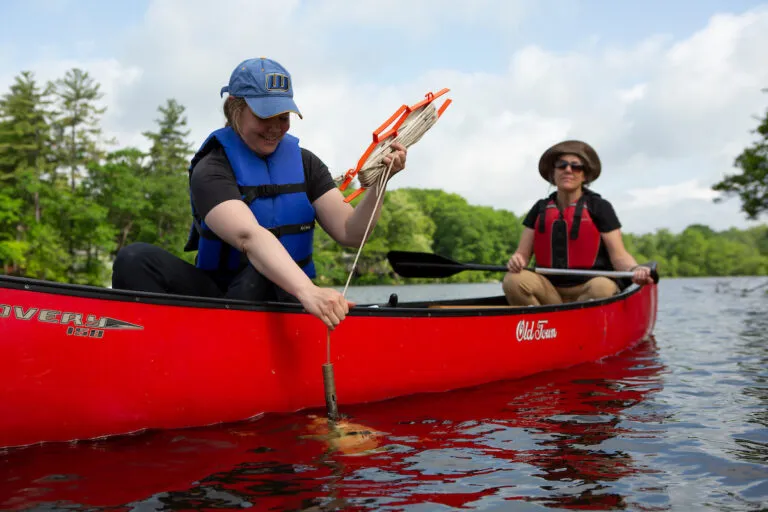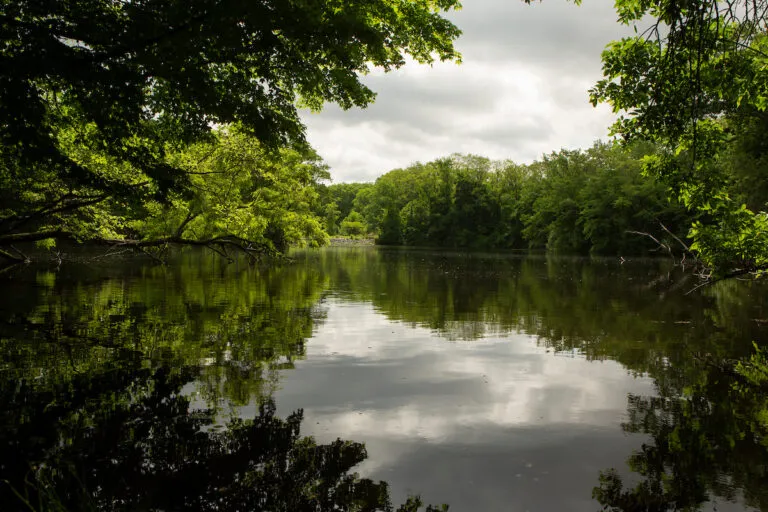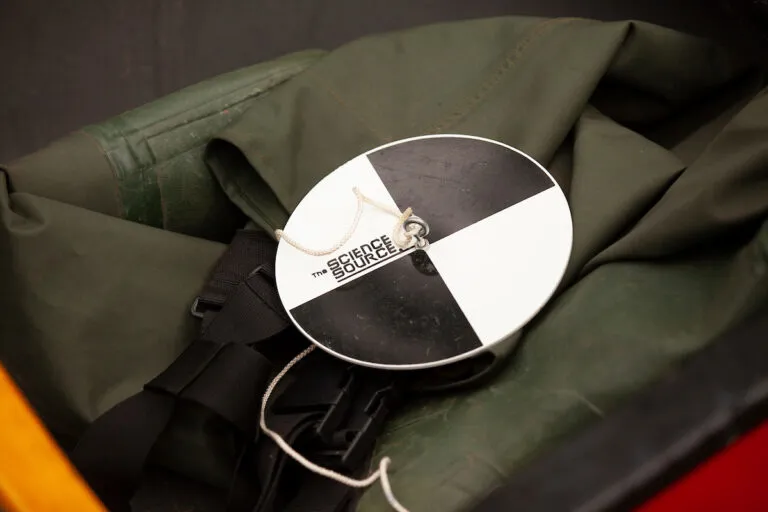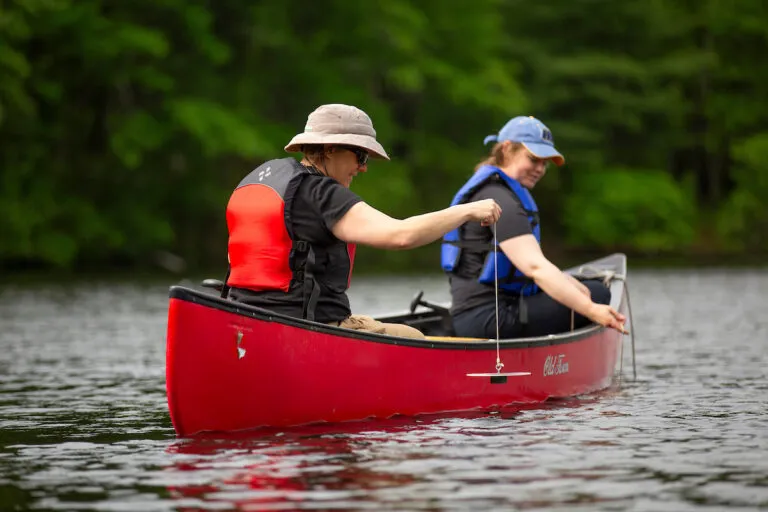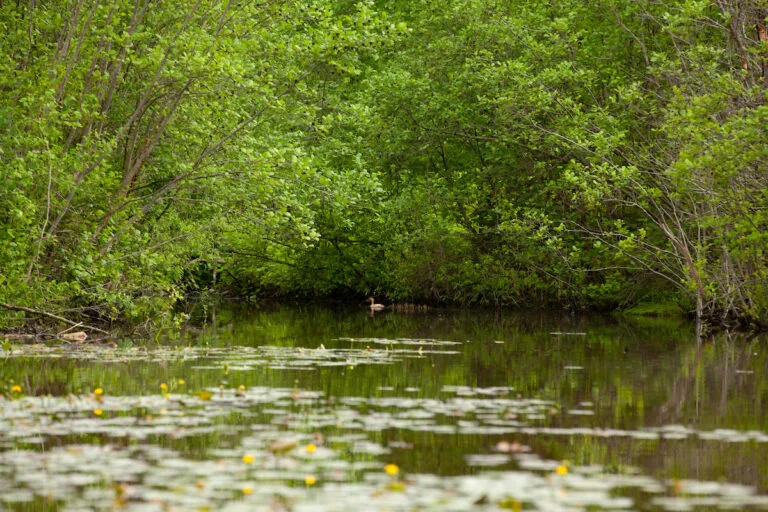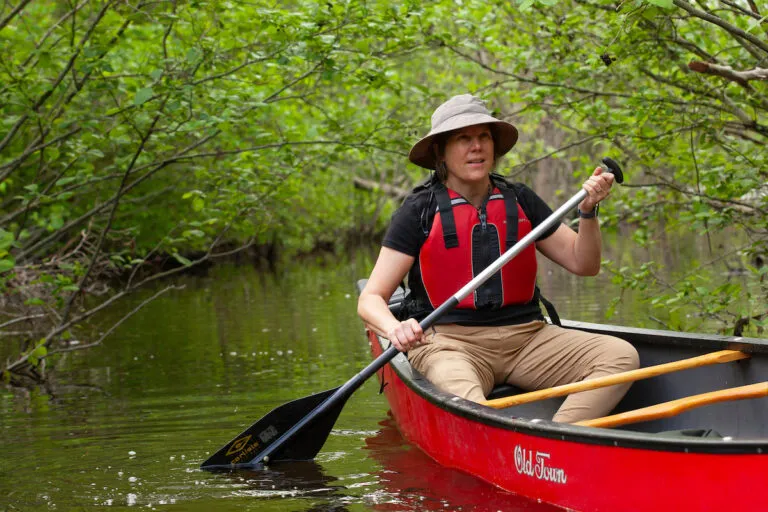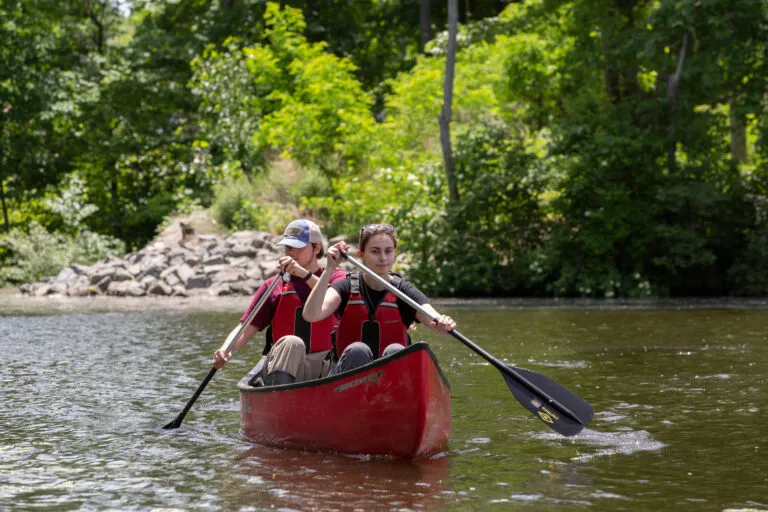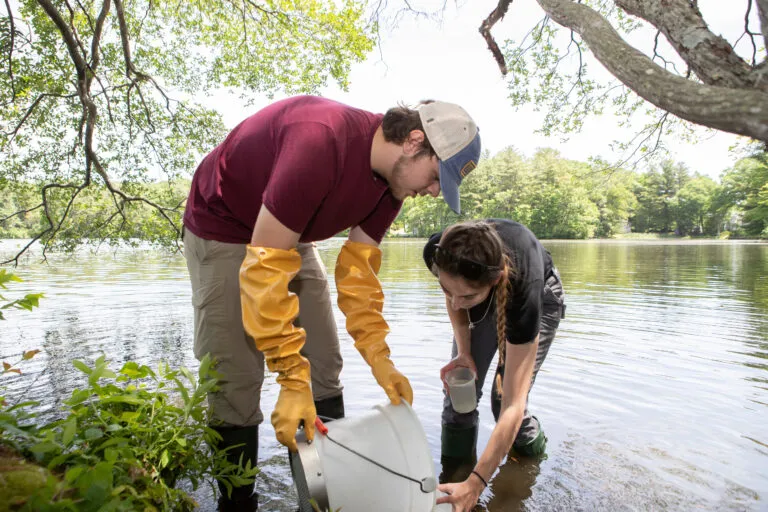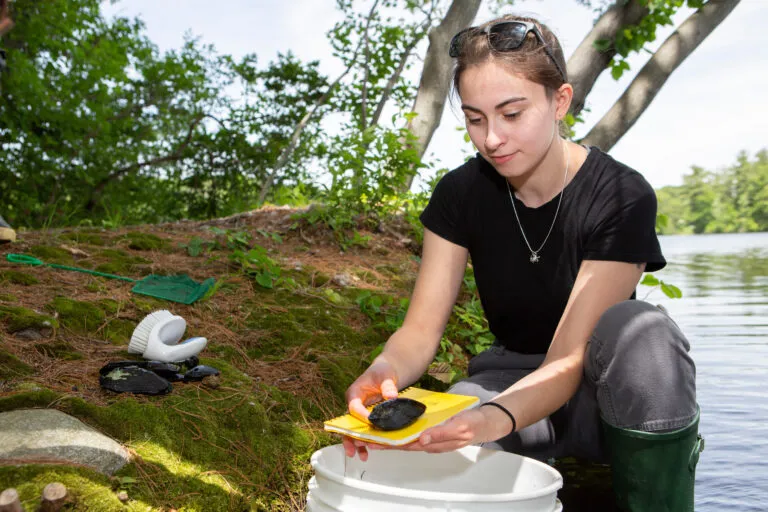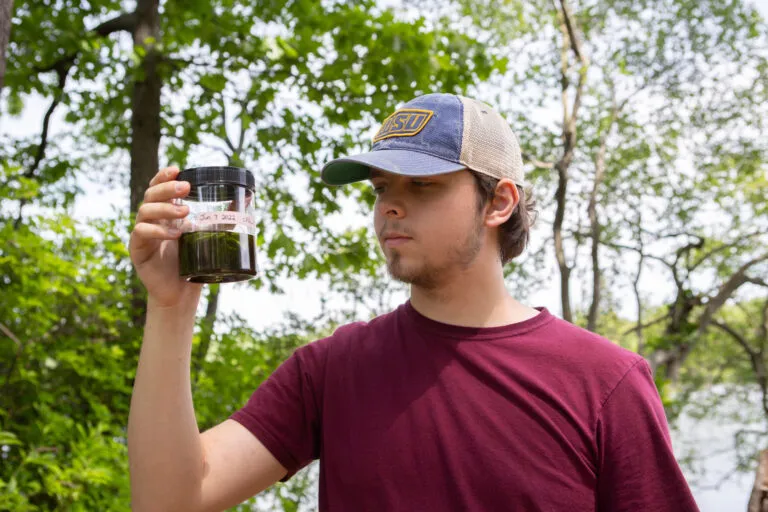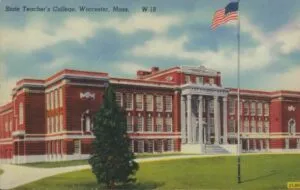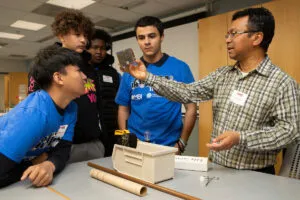Protecting Worcester’s Lakes, Ponds, and Streams
Environmental science faculty and students partner with the City of Worcester and community organizations to monitor the health of Tatnuck Brook Watershed.
Photos by Matt Wright ’10
A bumpy dirt road off June Street in Worcester winds past houses with yards and dogs before it eventually opens up to Patch Reservoir, a 31-acre lake just southwest of Worcester State University. In the early morning hours, while Worcester residents are heading to work, the reservoir comes alive as wildlife, from dragonflies to waterfowl, start their morning feedings. Out here, the sounds of traffic fade into the distance, overtaken by the croak of bullfrogs, the calls of songbirds, and the splash of water going over the spillway.
At the reservoir, it’s easy to forget you’re in a city. The water is encircled by densely growing pines and alders, clusters of bull lilies with bright yellow flowers, and patches of blue forget-me-nots and vivid purple irises. Worcester State professors Allison Dunn and Laura Reynolds, both in the Department of Earth, Environment, and Physics, have logged many hours at Patch Reservoir with their students, collecting samples as part of a collaborative effort with the city to monitor and preserve its waterways. On this May morning, they are out on the water, pointing out the small changes that only scientists would notice in this tranquil oasis.
One of the big problems Worcester’s waterways experience is the proliferation of invasive species. From her canoe, Reynolds reaches into the water and pulls out a frail, bright green plant. “This is water chestnut,” she explains, holding out the plant. “It’s an invasive species with spiky seed pods that can last in the sediment for years.” The plant has been a problem for the reservoir, but concerned community members are fighting back. “People from the Friends of Patch Reservoir organize pulling parties to remove as much as they can,” Reynolds says.
The data that Dunn, Reynolds, and their students are collecting will help the city maintain the delicate balance of these ecosystems. Patch Reservoir is part of the Tatnuck Brook Watershed, which begins in Holden and feeds Cook’s Pond, Patch Reservoir, Patch Pond, Coes Reservoir, and Coes Pond in Worcester, eventually flowing into Narragansett Bay in Rhode Island.
Dunn points to a pair of swans that left their nest and are feeding in the middle of the reservoir. Between the mated pair is one downy, gray cygnet. “It’s unusual to see just one baby,” Dunn says. That’s what happens when raptors, which eat cygnets and ducklings, are active in the area.
“In one way, it’s sad,” Dunn says. “But it’s also a sign of a functioning ecosystem.”

Map: Complex Stories
Scientific collaboration
In a city with more than 20 lakes, Worcester’s Lakes and Ponds Program has a lot to monitor—a responsibility made challenging by budget and personnel constraints. Jacquelyn Burmeister, the city’s senior environmental analyst, says the solution was to form partnerships with area colleges and universities. “It really takes a village to get this work done,” she said.
Worcester State’s collaboration with the city started in 2018, when the university received a grant from Campus Compact to create a course that incorporated community-based elements. With that seed money, Dunn and the city’s Department of Public Works and Parks developed a pilot program to look at some preliminary indicators of water quality in Tatnuck Brook.
The city has a strict monitoring program with quality control and quality assurance protocols that require a certain amount of training for all sample takers. Following that training, in fall 2019, students in Dunn’s Hydrology course went to two sites—an upstream site near Camp Kinneywood and a downstream site near the university’s campus—every week to measure water conductivity, which would reveal salt ion levels. The data collected over the course of a year showed that conductivity was significantly higher in the more urbanized area downstream, and the difference was more pronounced in the winter months, leading to the conclusion that road salt appears to be washing into the brook and affecting the water quality.
That research proved how vital the university’s contribution to the city could be. In 2022, Reynolds and other Worcester State faculty Diana Sharpe, Dunn, Bill Hansen, and Meghna Dilip spearheaded a project funded by an Aisiku Interdisciplinary Grant from the university’s Imoigele P. Aisiku, M.D., ’92 STEM Center to monitor water quality in Cook’s Pond, Patch Reservoir, and Coes Reservoir. Every two weeks, from May to November of that year, students took water samples from all three sites to determine temperature, dissolved oxygen, conductivity, pH, and levels of phosphorus, nitrates, ammonia, suspended solids, and E. coli.
Worcester State was an ideal partner for the city, Burmeister says, partly because of its location in the headwaters of the Tatnuck watershed. Burmeister says that the city knew there were nutrients and pollutants coming from upstream, but it was not able to devote the resources to measuring them. The university’s involvement in the project allowed the city to get data on two lakes—Patch Reservoir and Cook’s Pond—they did not have the resources to monitor themselves.
Urban waterways experience numerous threats, including an excess of nutrients and sediments, industrial contaminants, salt loading, increased temperatures, and invasive species, all of which threaten the native species in the ecosystem and can affect drinking water quality and recreational activities. Cyanobacteria, a blue-green algae found in most aquatic ecosystems, can, in warm, nutrient-rich lakes and ponds, reproduce rapidly and create blooms that lower oxygen levels in the water, killing fish and other organisms. Extremely large blooms of certain species can release toxins that are harmful to humans and pets.
Another problem occurs when rainwater picks up pollutants, including oil, fertilizers, nitrogen, and phosphorus, from roads and walkways and flows them into waterways, supercharging the growth of harmful bacteria. Rainwater also forces sediment into waterways, making them shallower and creating an opportunity for invasive plants to grow, displacing the native aquatic life.
Dunn says the data they are collecting provides important insights to the scientific community about less studied urban aquatic systems. “These are some of the systems where we’re seeing a lot of changes.” Many lakes and waterways have a lifespan where they evolve slowly from pristine, clear lakes to eutrophic lakes—greener, shallower, and with more plants. This process happens naturally, but in urban areas, humans, cars, and buildings make the process go faster.
Burmeister says one of the city’s goals is to slow down that process. “It’s healthier for recreation, it’s healthier for our wildlife, and it’s ultimately going to allow our lakes to exist for a longer time.”
She says Worcester State has taken their scientific partnership with the city and run with it. “The university has provided an amazing amount to this partnership,” she said, praising the project’s “really excited students who have been a joy to work with.”
“I can’t stress enough how the success of this program is based on the fact that it’s a mutually beneficial project,” Burmeister said. “We’re not just trying to bring on students to do what we want them to do. We are shaping the program to meet both the needs of Worcester State University and the City of Worcester. We’ve gotten better at that through the addition of other projects piggybacking onto the Worcester State projects. There’s data being collected at the water bodies monitored by Worcester State that we’re not even doing as a city at the other water bodies.”
In addition to working with Worcester colleges and universities, Burmeister works with community organizations like the Tatnuck Brook Watershed Association and the Indian Lake Watershed Association, composed of residents who are passionate about protecting the waterways.
Reynolds regularly attends association meetings, and now several Worcester State students have attended. At these meetings, students hear what residents are experiencing in their watershed and share data gathered at these sites so community members can feel comfortable about the way they interact with their waterways.
“The students get a chance to experience what these different groups in the community care about and what they’re interested in,” Dunn said. “And they also just get to meet a lot of people, which are all positive experiences.”
Community partnership
One of these community members is Elsie Uffelmann, a member of the Tatnuck Brook Watershed Association who has been involved in water preservation for more than 40 years.
Growing up, she spent a lot of time on the water. After she graduated college, she wanted to move somewhere new. “I looked at a map and saw a bunch of lakes and colleges,” she said, and decided to move there. That place was Worcester. She has lived here since 1981.
She now lives with her husband in a house near Cook’s Pond. From her deck, she has a front-row view of the pond’s myriad wildlife, including great blue herons, muskrats, beavers, merganser ducks, eagles, geese, bace, wood frogs, and bullfrogs, though there was a period of about 10 years when the frogs disappeared.
“Frogs are like the canary in the coal mine,” she said, “because they’re the first to be affected by pollution.” She remembers when construction on a housing development built in the 1990s started, pouring pollution into the pond. “We didn’t hear frogs after that for 10 years,” she said. Fortunately, they’ve since made a comeback. “It’s so nice to hear them again,” she said.
Cook’s Pond is under threat again. Every time it rains, some of the fertilizers people use on their lawns flow into catch basins that drain into Cook’s Pond. The fertilizers nourish the weeds in the pond, and then chemical treatments are needed to kill the weeds, which can give an advantage to algae growth. All these activities can disrupt the chemical balance of a pond.
To combat this, the Tatnuck Watershed Association has organized a speaker series and other educational efforts. One of the things that helps the association educate people is the data that Worcester State is helping to gather.
“Our affiliation with Worcester State is huge,” Uffelmann said. “It’s exciting for us to collaborate with students and help them learn. We have this perfect setup here. We can see how water changes through an urban environment. We are happy to share our resources and happy that Worcester State is willing to share theirs. The data they are gathering help guide our management decisions. Now Worcester State will be sharing information with the Blackstone River Coalition and vice versa. We’re happy that Worcester State reaches out to the community. They are willing to exchange knowledge and not stay in an ivory tower.”
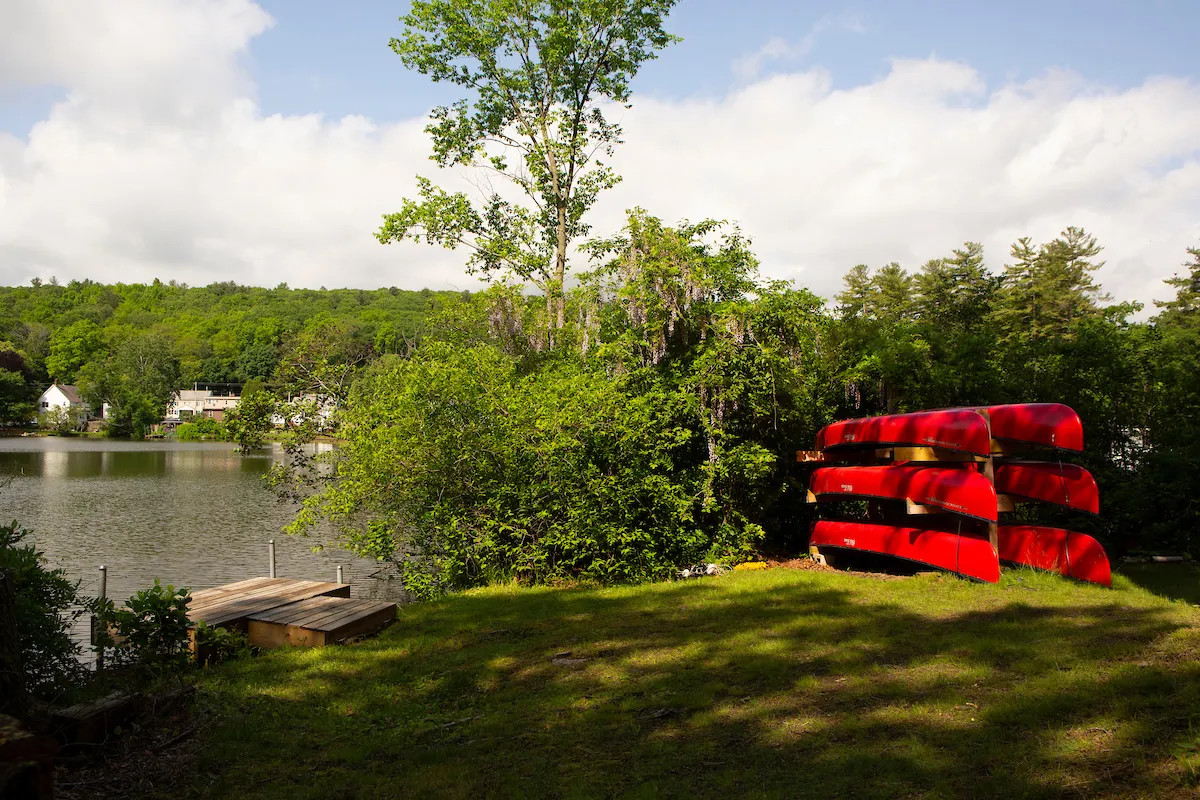
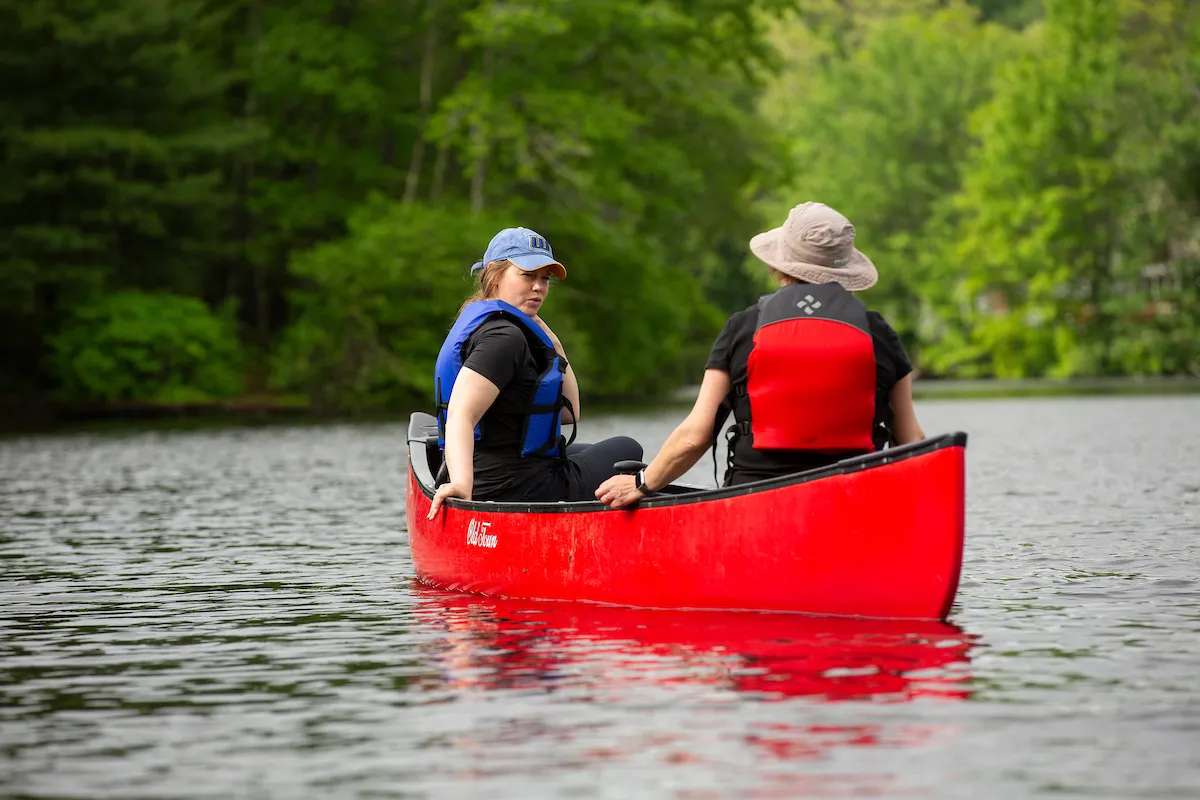
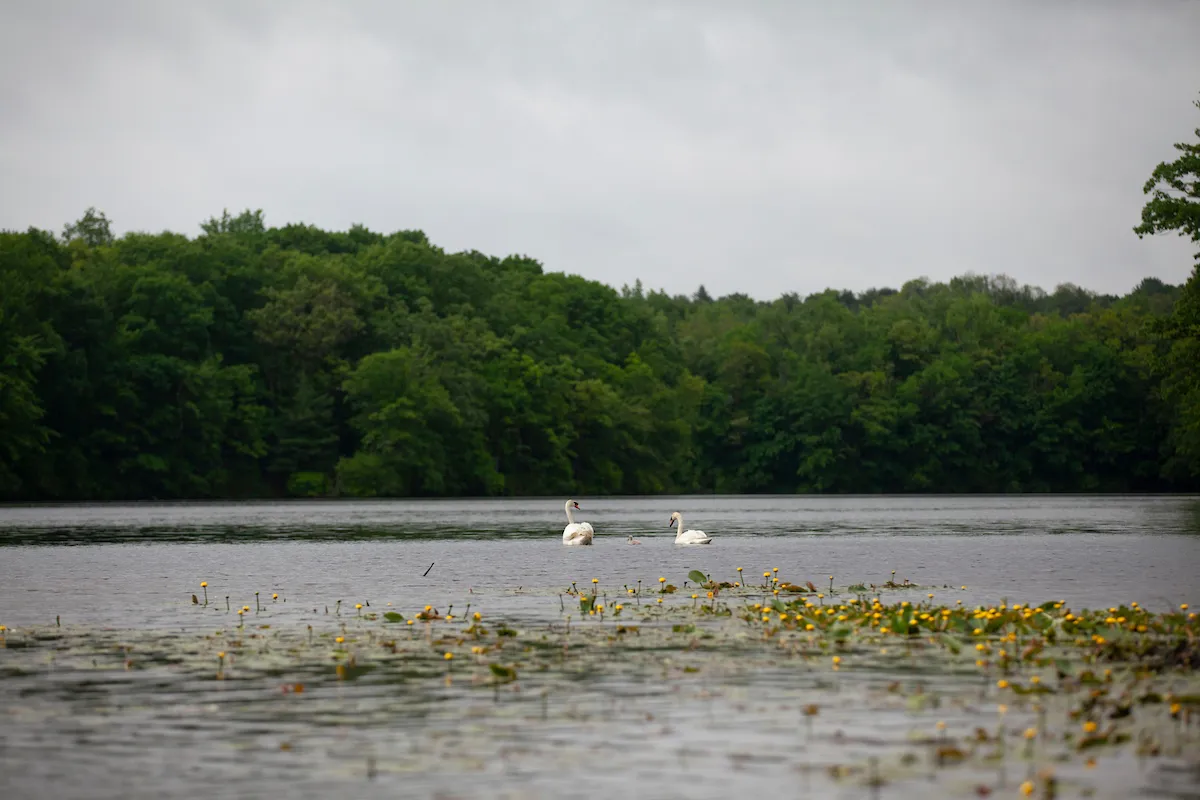
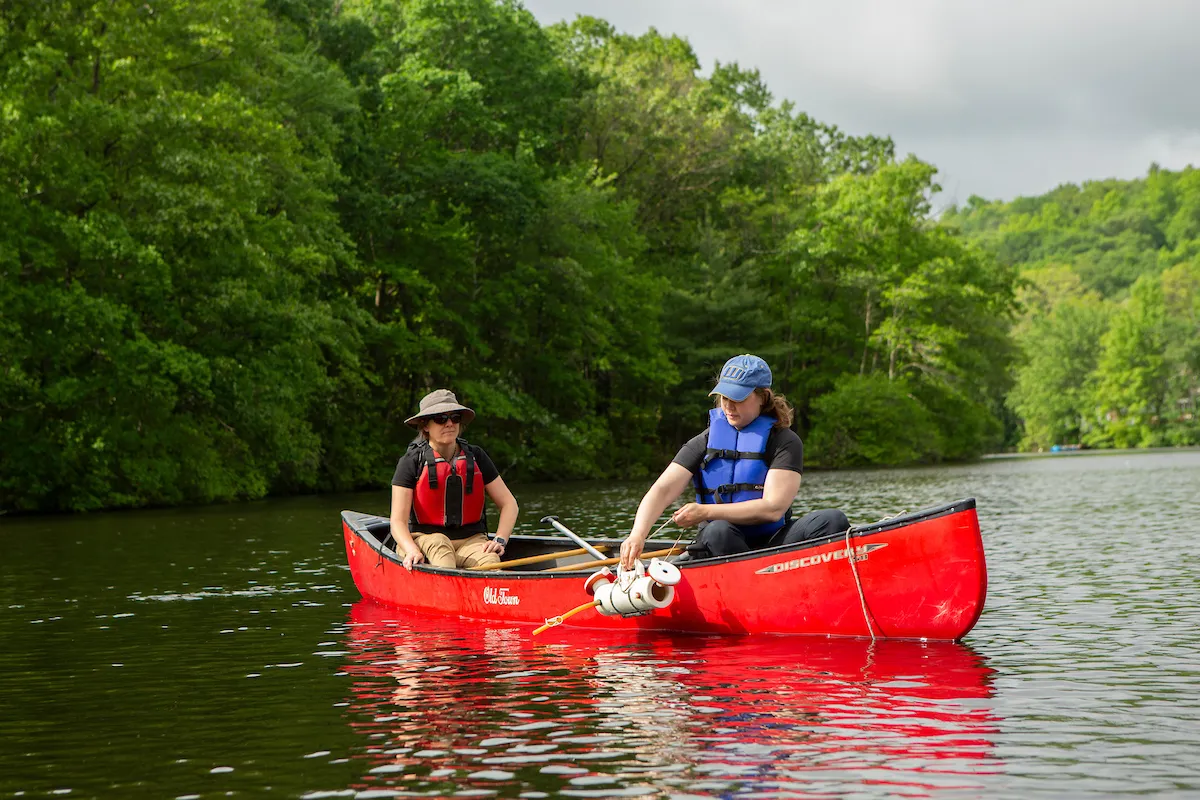
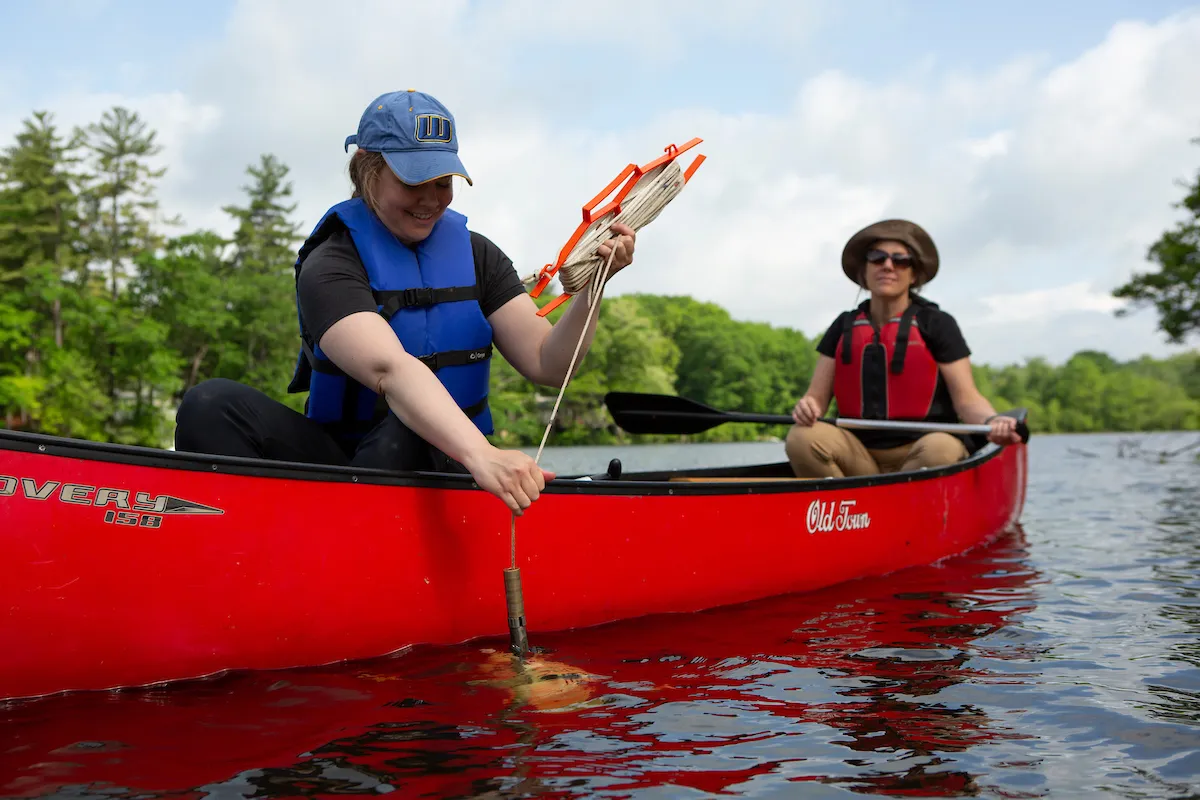
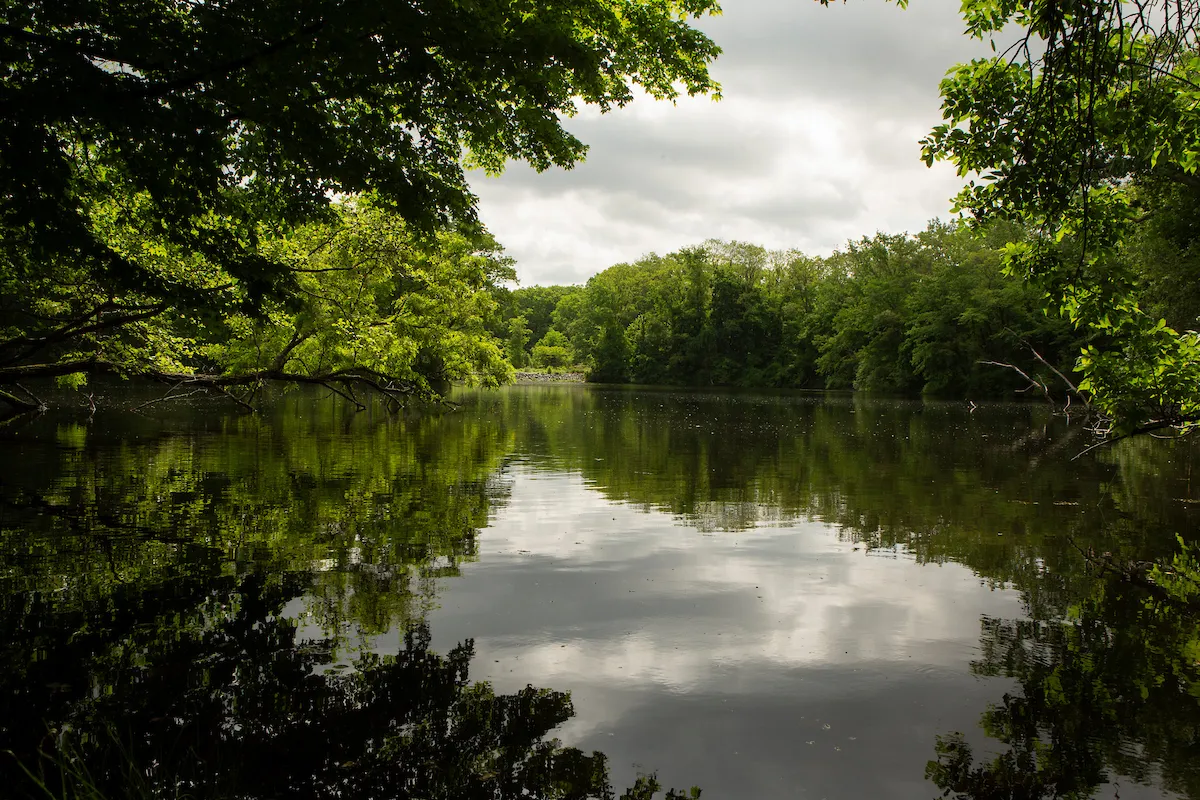
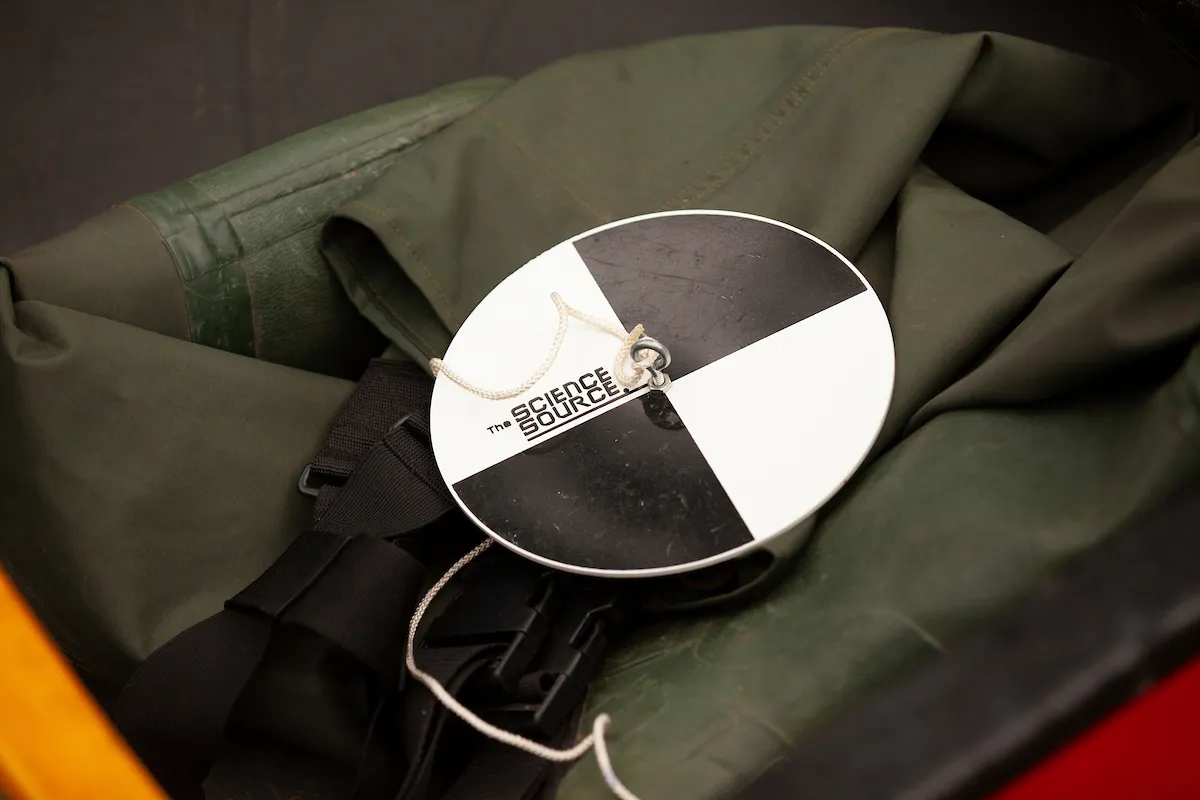
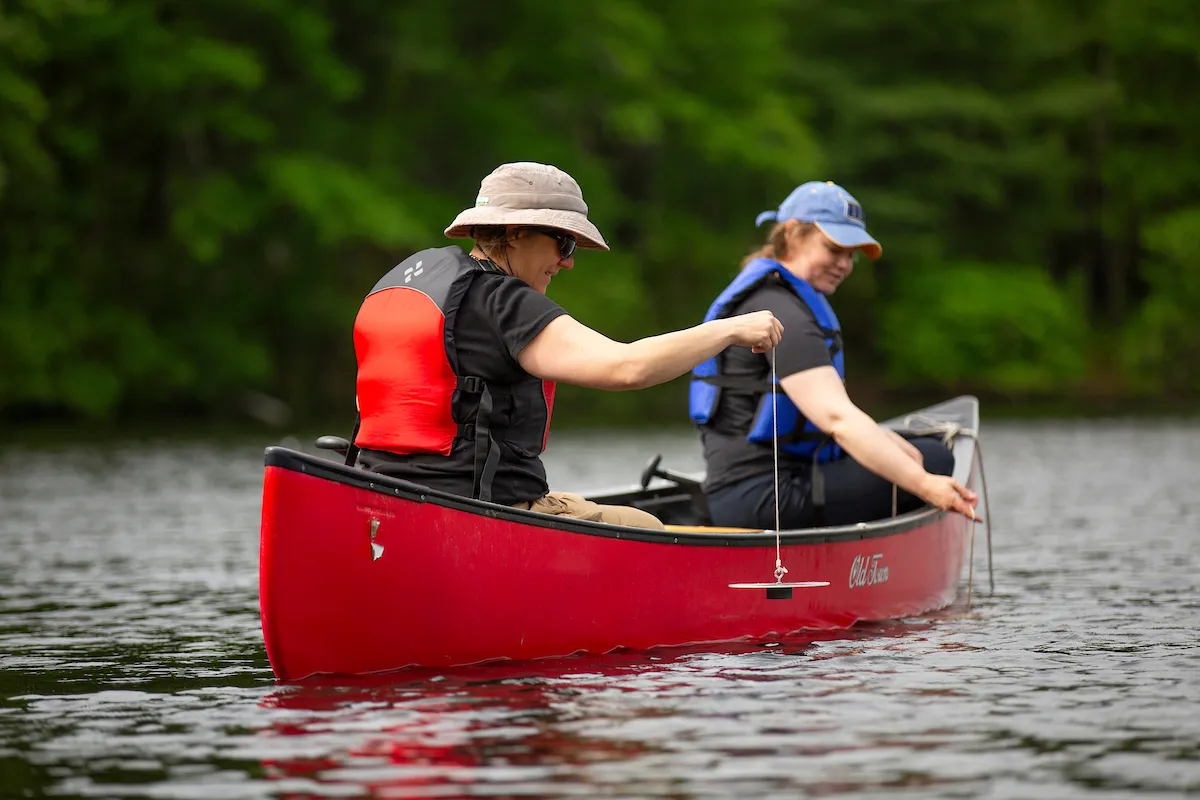
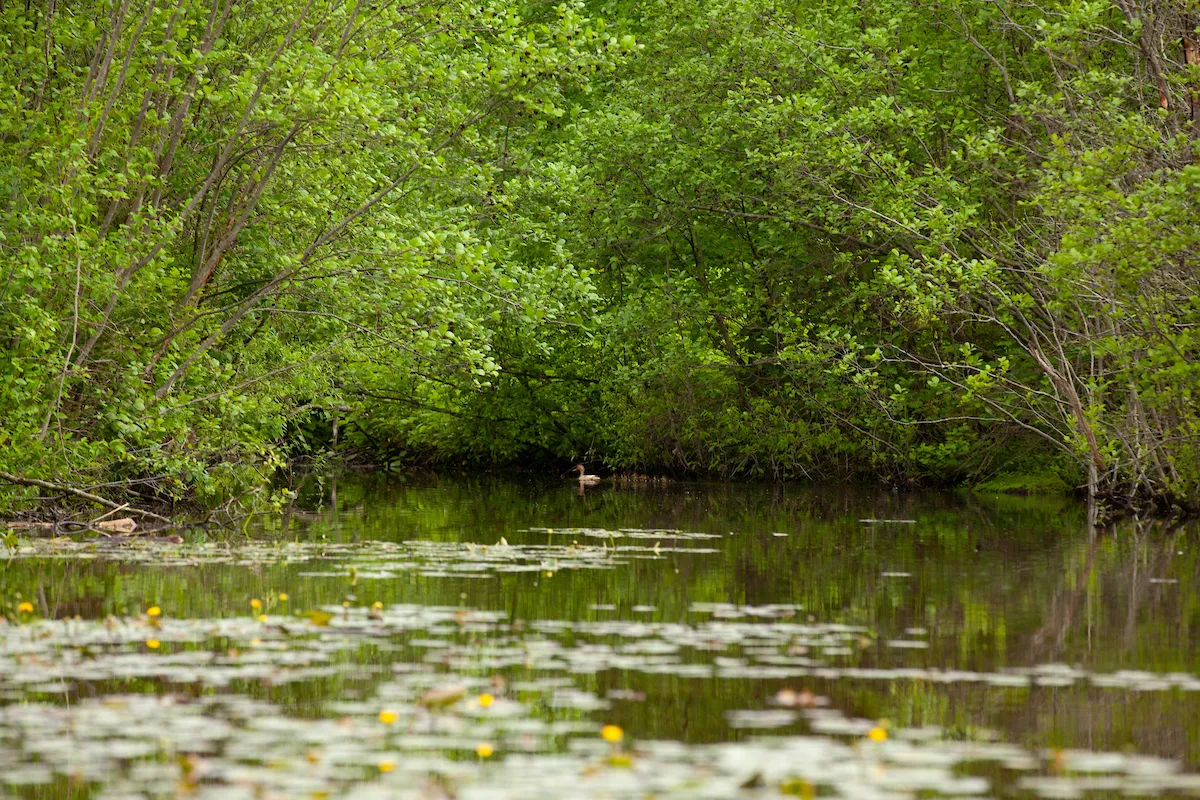
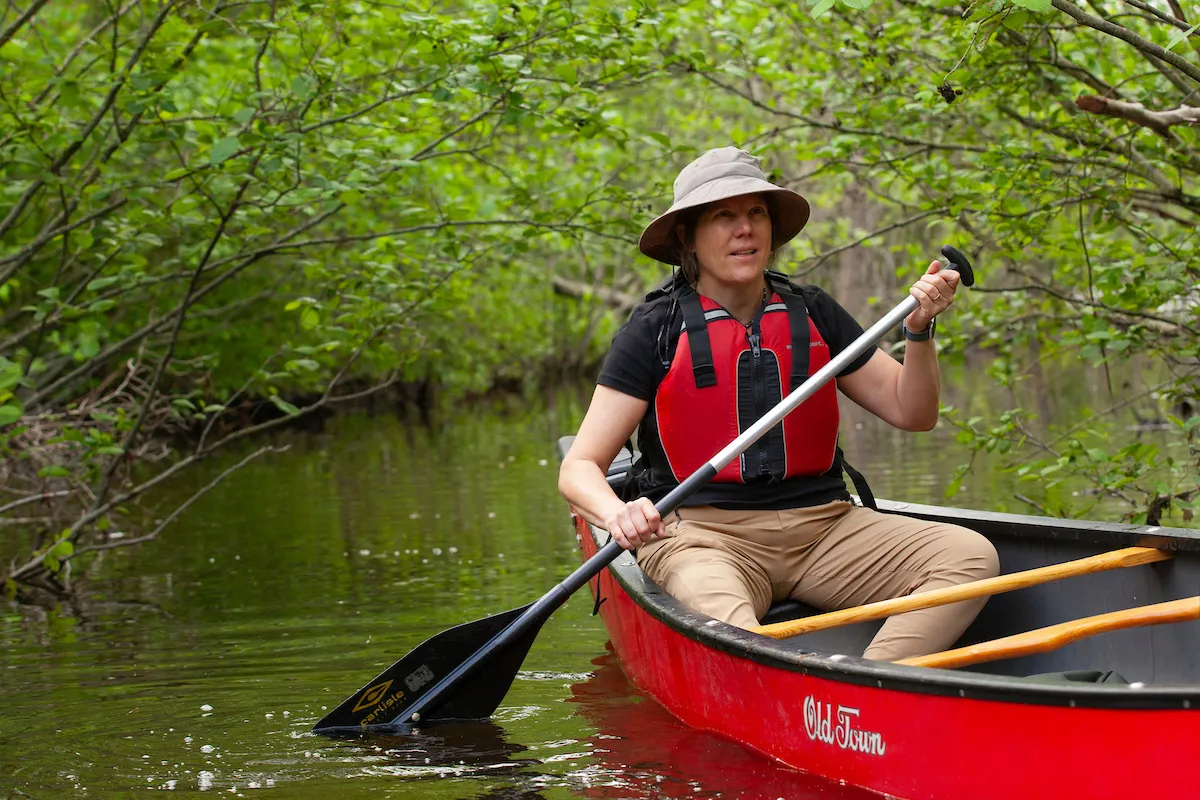
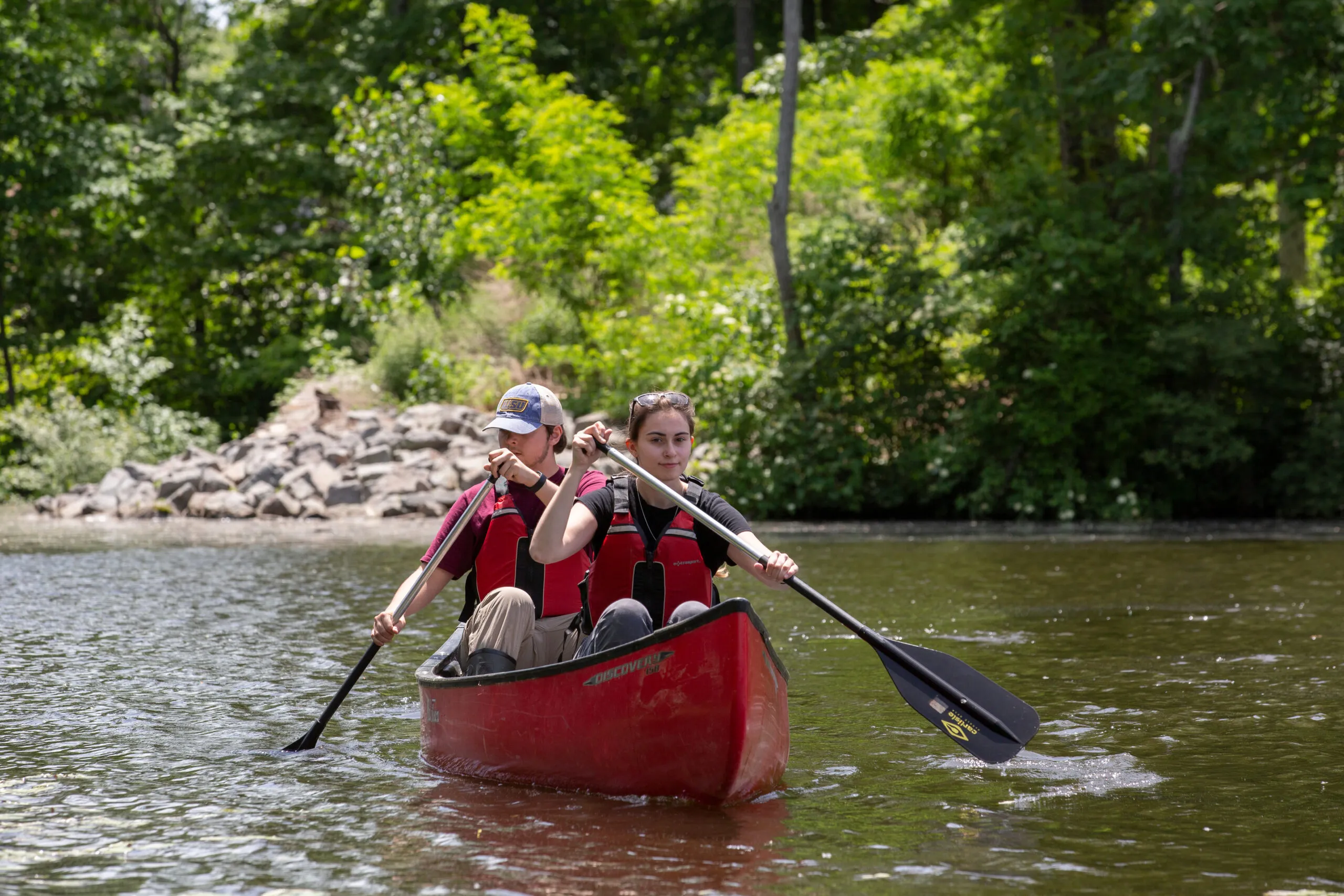
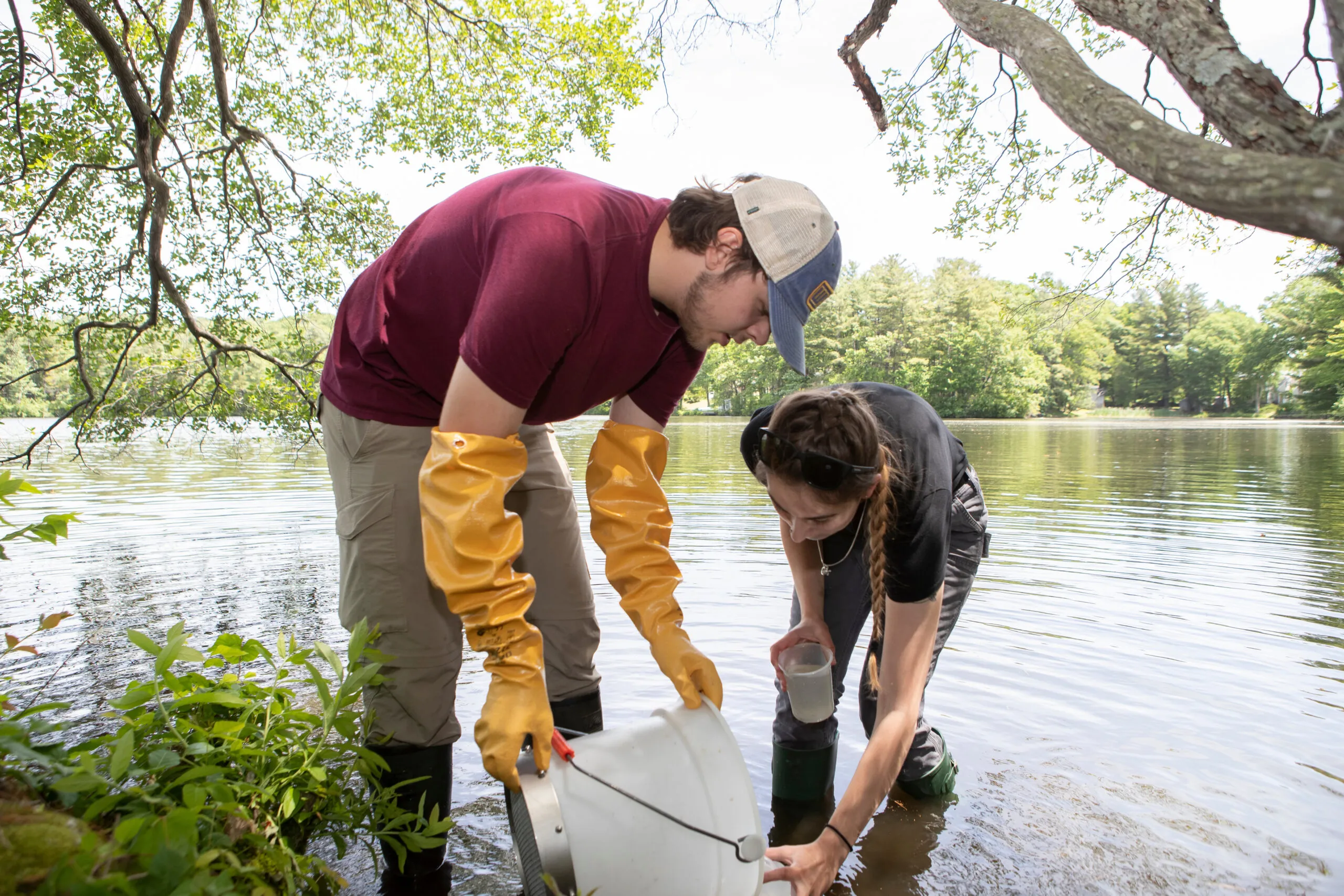
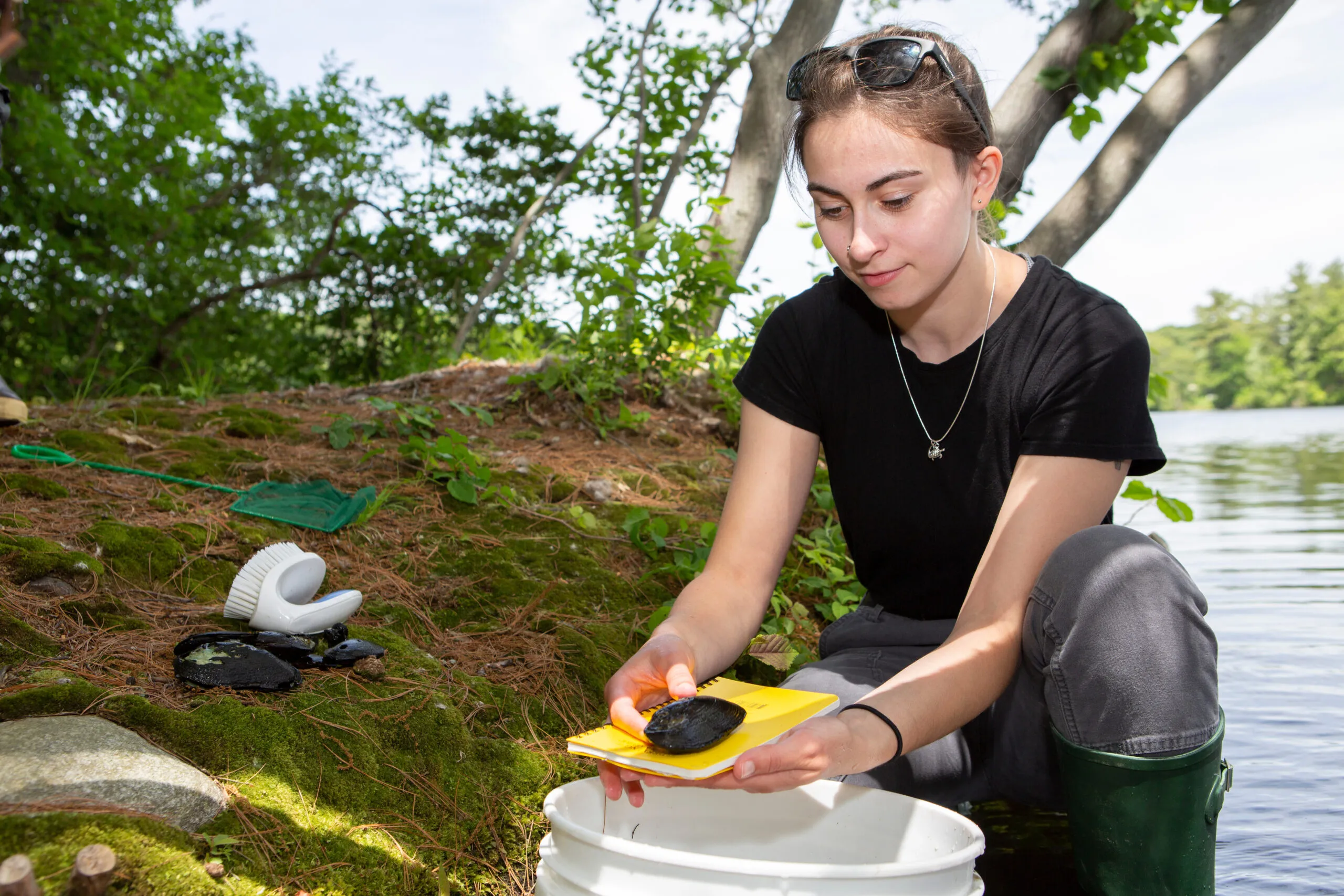
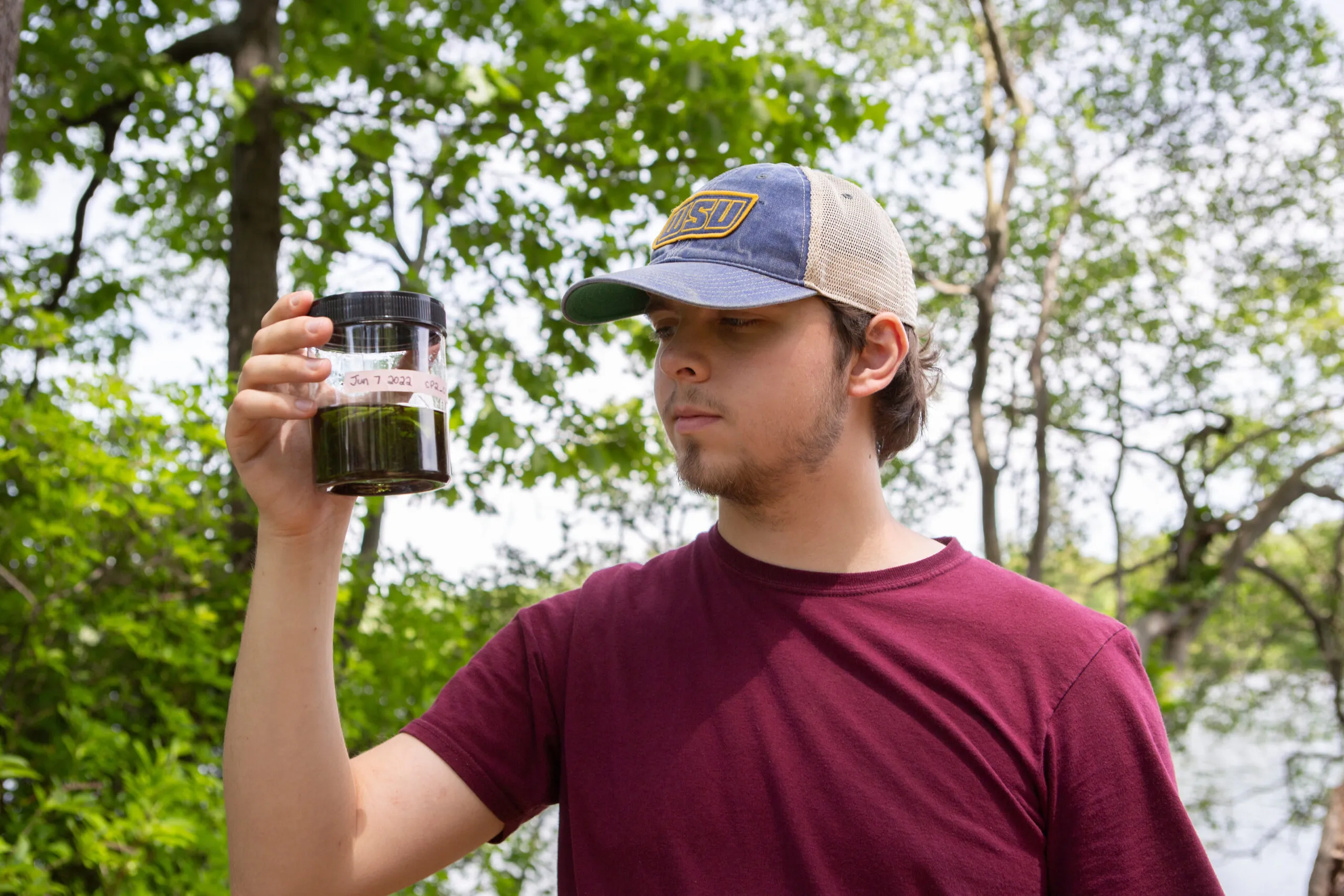
A natural laboratory
While the collaboration between Worcester State and the City of Worcester benefits the community, it has also benefited the university. There’s nothing like field-based learning, Reynolds says. “The fact that we have this natural laboratory right out our back door to do it is amazing,” Reynolds said. “Not every university has that.”
Since 2022, the university has had an agreement with the Greater Worcester Land Trust to use their Patch Reservoir Environmental Field Station on Breeze Drive. In addition to providing easy access to the reservoir, the agreement gives the program a place to store its gear—10 canoes, two kayaks, oars, life jackets, anchors, microscopes, sampling instruments, and a refrigerator for sediment samples. Before the agreement, students and faculty had to schlep their gear from the university to the reservoir.
The students who work on the project gain a deep knowledge of these systems. They get hands-on experience measuring parameters of water quality, working with waders and in foul weather, and applying textbook knowledge to their own landscape. They are trained in modern scientific methods, using real tools that they would be using in jobs. After this experience, many have gotten internships and jobs where they are using those same or similar tools.
While many of the students doing this field work are environmental science majors, some are not. The hands-on scientific experience gives all students, from psychology majors to communication majors, a great introduction to the scientific method and increased scientific literacy.
“Students see these different processes happening all around them,” Reynolds said, “but they might not notice. One of my personal goals is I want students to start being distracted by those things and start noticing them outside the classroom, too.”
Dunn and her students talk about what they expect the water to look like as it flows through an urban area. Then they collect the water samples, test them, and evaluate that against their initial thoughts.
“We can see if our results mesh with our prior thinking, and if they don’t, that’s interesting too,” says Dunn. “I think one of the most important things they can learn is how scientists evaluate conflicting or surprising evidence and then change their view of the system. If they understand that science is this process and not this magical arrival at a hypothesis, it helps them better assess whatever they are reading in the media. They understand it is a process of observing, questioning, measuring, and reassessing. Any major can benefit from that. It’s a process you can apply to life, not just scientific questions.”

